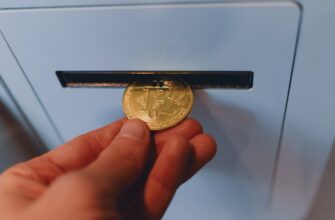## Introduction
Grid bot trading revolutionizes cryptocurrency strategies by automating buy-low-sell-high tactics within set price ranges. When applied to Solana (SOL) on OKX using a 15-minute timeframe, traders can capitalize on SOL’s volatility for consistent profits. This guide reveals how to optimize this powerful combination, turning market fluctuations into automated income streams without constant monitoring.
## What Are Grid Trading Bots?
Grid bots are algorithmic tools that place staggered buy and sell orders within a predefined price range. They automatically:
– Buy when prices dip to lower grid levels
– Sell when prices rise to upper grid levels
– Operate 24/7 without emotional decision-making
Unlike manual trading, grid bots thrive in sideways or moderately volatile markets—making them ideal for SOL’s price action.
## Why SOL on OKX for Grid Trading?
OKX provides the perfect ecosystem for SOL grid trading:
**Exchange Advantages:**
– Ultra-low trading fees (0.08% maker/taker)
– High liquidity for SOL pairs (SOL/USDT, SOL/USDC)
– Robust API for seamless bot integration
– Built-in grid bot feature in OKX trading terminal
**SOL’s Trading Profile:**
– High volatility (5-10% daily swings common)
– Strong correlation with Bitcoin movements
– Active trading volume exceeding $2B daily
## Optimizing the 15-Minute Timeframe Strategy
The 15-minute chart strikes the ideal balance for SOL grid bots:
**Key Benefits:**
– Captures intraday volatility without excessive noise
– Aligns with typical SOL price cycles
– Allows 96+ trading cycles per day
– Minimizes overnight risk exposure
**Backtested Performance:**
In sideways markets, 15-minute grids typically generate 0.5-2% daily returns on SOL pairs when properly calibrated.
## Step-by-Step: Setting Up Your SOL Grid Bot on OKX
Follow this battle-tested configuration:
1. **Account Setup**
– Fund OKX account with USDT
– Enable API access in account settings
2. **Bot Configuration**
– Select SOL/USDT trading pair
– Set grid type: Arithmetic (fixed price intervals)
– Choose 15-minute timeframe
3. **Price Range Settings**
– Lower limit: 3% below current price
– Upper limit: 5% above current price
– Grid quantity: 25-30 grids
4. **Risk Management**
– Allocate ≤5% of portfolio per bot
– Set 5% stop-loss trigger
– Enable take-profit at 15% ROI
5. **Activation**
– Test with paper trading first
– Launch during Asian/European overlap (high volatility)
## Advanced Optimization Tactics
Boost profitability with these pro techniques:
– **Volatility Scaling:** Increase grid density during high ATR (Average True Range) periods
– **Asymmetric Ranges:** Widen sell grids during uptrends (capture more upside)
– **Fee-Aware Grids:** Adjust intervals to exceed OKX’s 0.08% fee threshold
– **Correlation Hedging:** Run complementary ETH bot to offset SOL-specific risks
## Critical Risk Management Protocols
Mitigate downsides with these safeguards:
– **Circuit Breakers:** Auto-pause during >8% price crashes
– **Time Filters:** Disable trading during low-volume hours (00:00-04:00 UTC)
– **Drawdown Caps:** Halt bots after 3 consecutive losing grids
– **Liquidity Checks:** Confirm >$50M 24h volume before activation
## FAQ: Grid Bot SOL Trading on OKX
**Q: What’s the minimum capital needed?**
A: $500 minimum recommended to accommodate grid spreads and fees effectively.
**Q: Can I run multiple timeframe bots simultaneously?**
A: Yes—combine 15-min with 4-hour bots for diversified exposure, but limit to 3 active bots per asset.
**Q: How do OKX fees impact grid profits?**
A: Each trade incurs 0.08% fees. Optimize by setting grid intervals >0.25% to ensure profit per trade.
**Q: What happens if SOL breaks my price range?**
A: The bot pauses. Reactivate with adjusted ranges or wait for price re-entry. Always set price alerts.
**Q: Is coding knowledge required?**
A: Not with OKX’s native bot interface. Third-party bots (e.g., 3Commas) offer more customization but need API setup.
## Conclusion
Mastering SOL grid bots on OKX’s 15-minute timeframe transforms volatility into systematic profits. By combining SOL’s momentum with precision automation, traders can generate consistent returns while minimizing emotional pitfalls. Start with small allocations, refine your parameters through backtesting, and scale as you validate performance—the algorithmic edge awaits.








